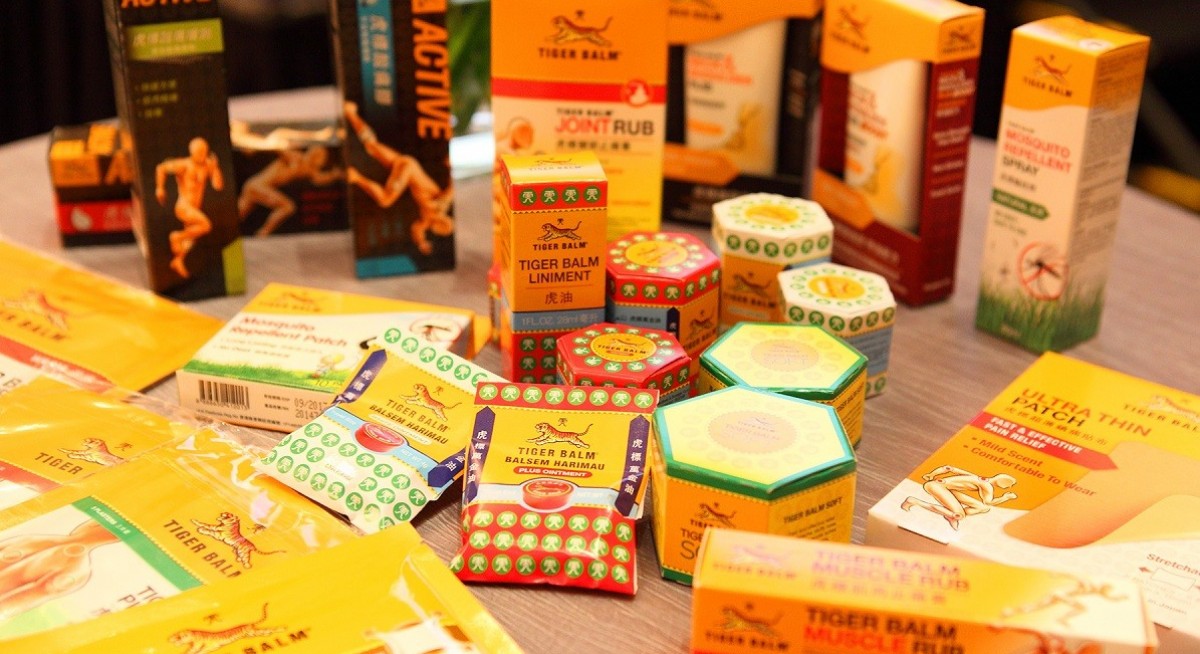Today, Haw Par generates the bulk of its revenue from Tiger Balm products. It has a more modest property business in the form of a clutch of office and industrial properties generating rental income. There is also an oceanarium in Thailand, making the group a decidedly mixed bag of activities.
Right from its founding, Haw Par has owned a diversified portfolio of businesses. When Haw Par was listed by the descendants of the Aw Brothers, who created the Tiger Balm ointment more than a century ago, there were also stakes in other businesses, including media, property and banking.
Following subsequent ownership changes, the mix became even more diverse. It was involved in consumer electronics, engineering, textile manufacturing and trade. It even distributed sports gear for brands such as Nike, Adidas and Prince. “We were out of focus and the management was being pulled in different directions,” recalls CEO Wee Ee Lin in an interview with the Singapore Exchange in 2021.
Under his charge, Haw Par got rid of the less profitable units. “In fact, I would say that we’ve now become over-focused on just two operating divisions — healthcare and leisure,” says Wee.
Haw Par’s revenue does not tell the whole story of why investors should look at this company. According to Lai and Tan in their July 29 unrated note, Haw Par is “an attractive cash cow with consistent and growing dividend payout”.
Revenue from the highly profitable Tiger Balm business has helped generate significant cash reserves over the years. What really makes Haw Par attractive, besides its cash balance of some $745 million as end of FY2024 ended December 2024, is its stakes in two other companies, United Overseas Bank (UOB) and UOL Group, whose longtime head honcho was the late former UOB CEO Wee Cho Yaw, who built up a sprawling business empire outside the bank.
In 1971, Haw Par, under the second generation of Aws, ceded control to UK investment firm Slate Walker, which sold off key operating assets such as the Chung Khiaw Bank. Tiger Balm was also out-licensed to another company for a pittance. In 1975, a new board was formed at the behest of the government to stabilise what was at one point the fifth-largest Singapore-listed company, with the Wee family in control ever since the patriarch joined the board.
Lai and Tan value Haw Par’s healthcare business at $4.70 per share, while its cash per share is at $3.10. Its stakes in UOB and UOL, meanwhile, are worth $15.80 per share. This is significantly higher than Haw Par Corp’s share price of $13.92 as of Aug 1. In total, via a sum-of-the-parts valuation, this company is worth $23.50. By applying a 20% holding company discount, Lai and Tan derived a fair value of $18.80 — still ahead of its current share price, which is already at its highest level since August 2019.
Long-time market observers have noted Haw Par’s role as a key piece of the Wee business empire, so it is unlikely that its stakes in UOL, and more so for UOB, will ever be reduced. More realistically, what will give minority Haw Par shareholders more value is the prospect of ever higher dividends, which it has done for nearly a decade. As Lai and Tan point out, ordinary dividends doubled from 20 cents per share in FY2016 to 40 cents for FY2024, which had another $1 in special dividends, yet another bumper since FY2018’s 85 cents.
The DBS analysts note that Haw Par enjoyed dividend and interest income of $183 million in FY2024, capping an 8% CAGR in the last five years, and “well in excess” of the $88 million it had paid out as dividends. “Haw Par is not solely reliant on investment income from UOB and UOL to payout dividends but can utilise its cash reserves to maintain payout levels in future,” the analysts state, suggesting that 60–70 cents per share can be paid.
Will the company do so? In the 2021 interview, CEO Wee said he has been eyeing potential new businesses, even as he noted the prudent balance sheet. “We’re keeping our powder dry so that we can strike when we need to. I have some years to go and I want to build at least another leg for Haw Par for the next generation.”




